Momentum (OCR GCSE Combined Science A (Gateway)): Revision Note
Exam code: J250
Momentum
Higher Tier Only
Calculating Momentum
A moving object has momentum which is defined by the equation:
p = mv
Where:
p = momentum in kilogram metre per second (kg m/s)
m = mass in kilograms (kg)
v = velocity in metres per second (m/s)
This means that an object at rest (i.e v = 0) has no momentum
Momentum keeps an object moving in the same direction, making it difficult to change the direction of an object with a large momentum
Since velocity is a vector this means that the momentum of an object also depends on its direction of travel
This means that momentum can be either positive or negative
If an object travelling to the right has positive momentum, an object travelling in the opposite direction (to the left) will have negative momentum
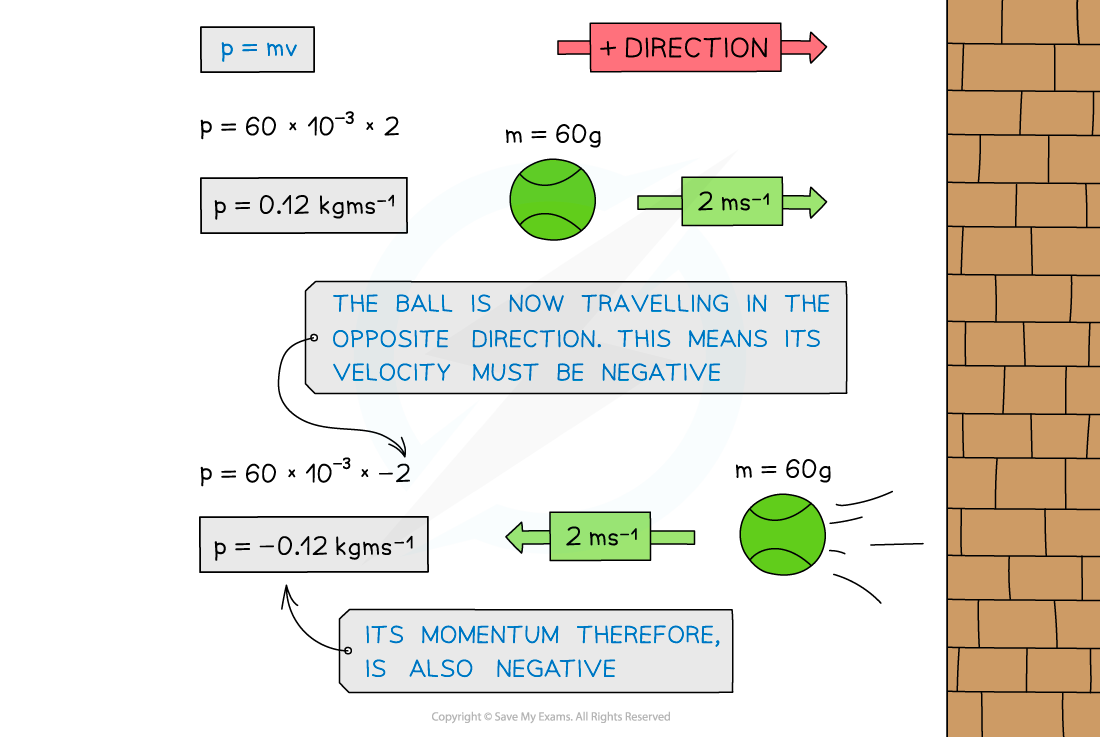
The tennis ball's momentum is negative when it moves in the opposite direction to which it initially was travelling in
Therefore, the momentum of an object will change if:
The object accelerates (speeds up) or decelerates (slows down)
Changes direction
Its mass changes
Worked Example
Which object has the most momentum?
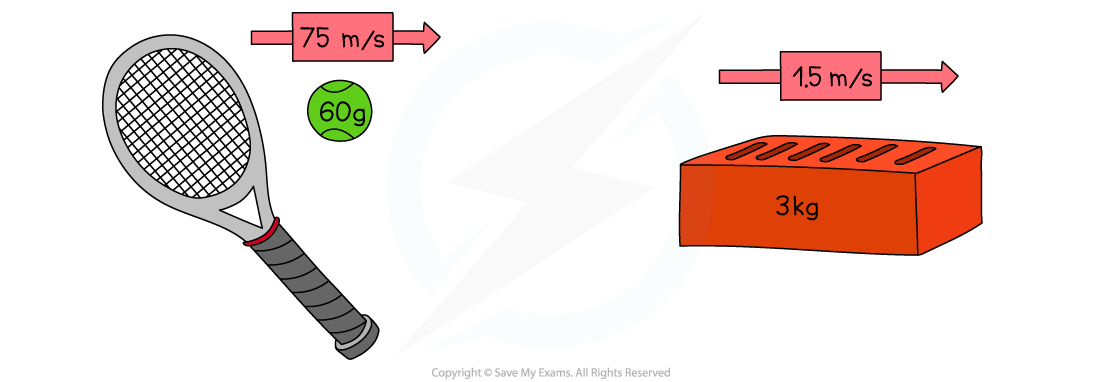
Answer:

Both the tennis ball and the brick have the same momentum
Even though the brick is much heavier than the ball, the ball is travelling much faster than the brick
This means that on impact, they would both exert a similar force (depending on the time it takes for each to come to rest)
Examples of Momentum
Examples of momentum in an event are collisions
Objects will either:
Collide and move in opposite directions - this is an elastic colision
Collide and move in the same direction together - this is an inelastic collision
When the objects move in opposite directions:
Each object will have a different velocity depending on its mass and initial momentum of the system
When the objects move in the same direction together:
They will have a combined mass and velocity
Momentum is always conserved in a collision
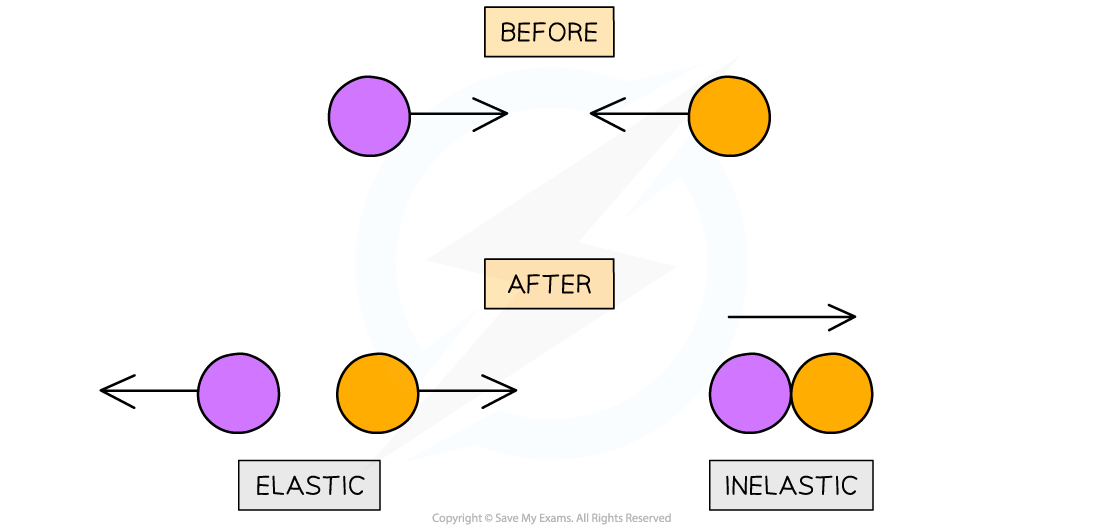
The difference between elastic and inelastic collisions
Conservation of Momentum
The principle of conservation of momentum states that:
In a closed system, the total momentum before an event is equal to the total momentum after the event
A closed system means the energy within the system is constant and there is an absence of external forces (e.g. friction)
In other words:
The total momentum before a collision = The total momentum after a collision
A system is a certain number of objects under consideration
This can be just one object or multiple objects
Since momentum is a vector quantity, a system of objects moving in opposite directions (e.g. towards each other) at the same speed will have an overall momentum of 0 since they will cancel out
Momentum is always conserved over time
The diagram below shows two masses m with velocity u and M at rest (ie. zero velocity)
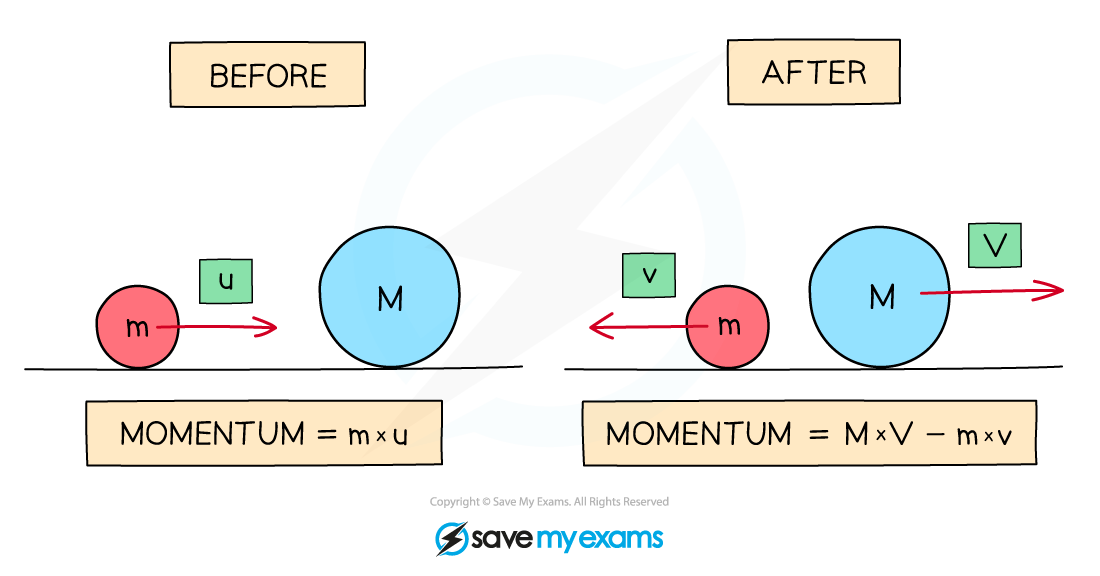
The momentum of a system before and after a collision
Worked Example
The diagram shows a car and a van, just before and just after the car collided with the van, which is initially at rest.
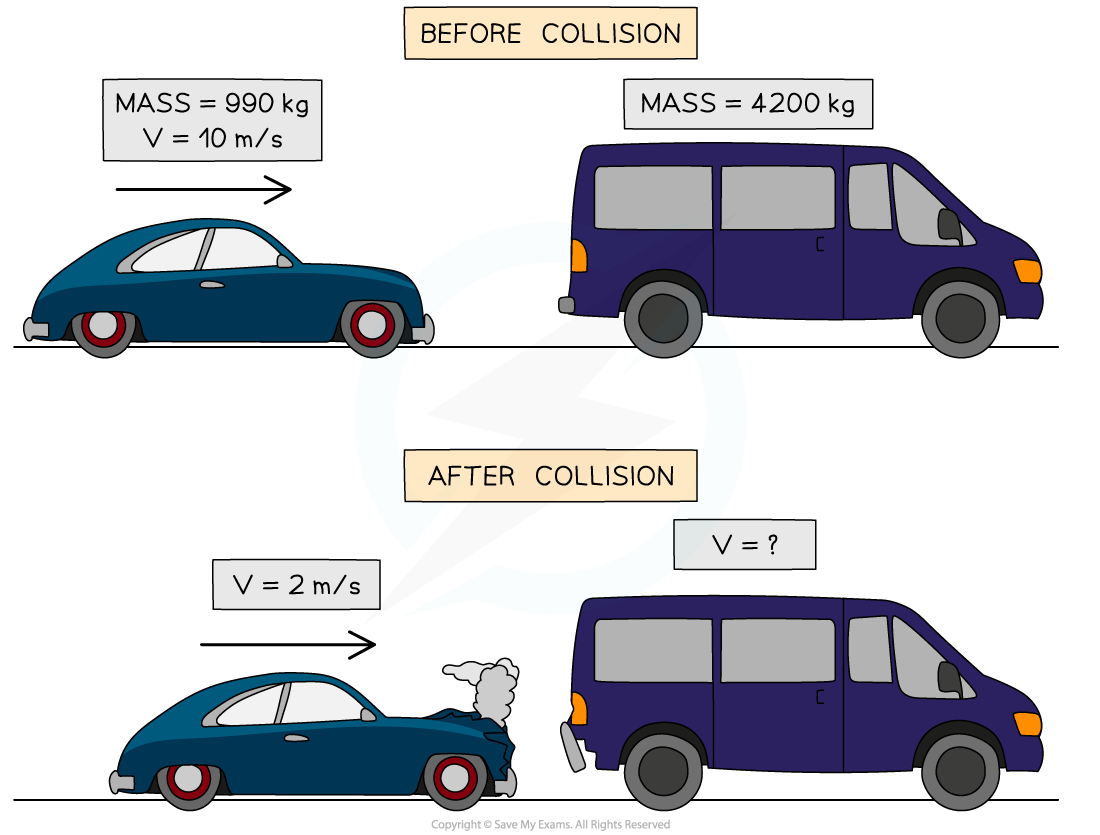
Use the idea of conservation of momentum to calculate the velocity of the van when it is pushed forward by the collision.
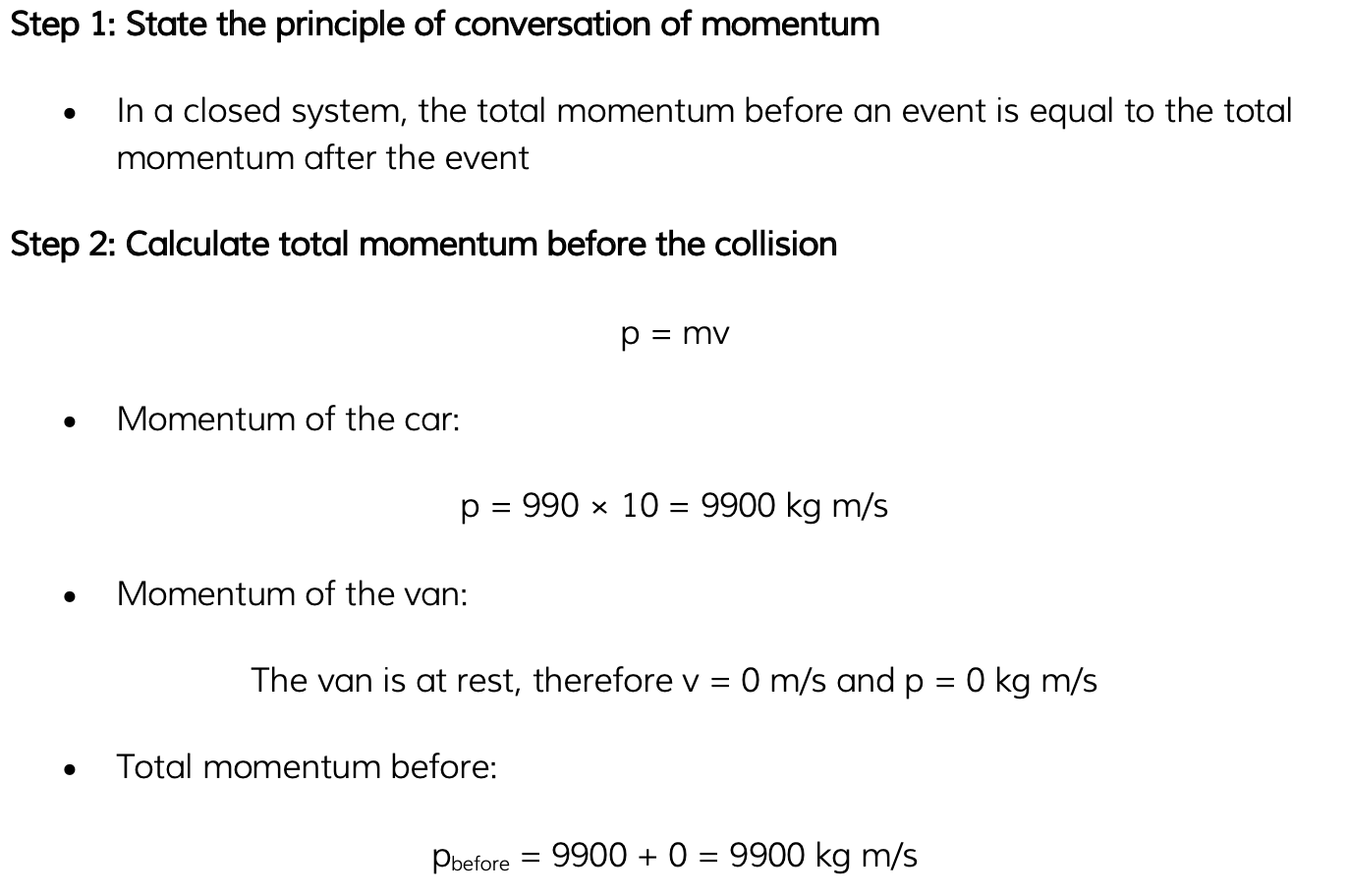
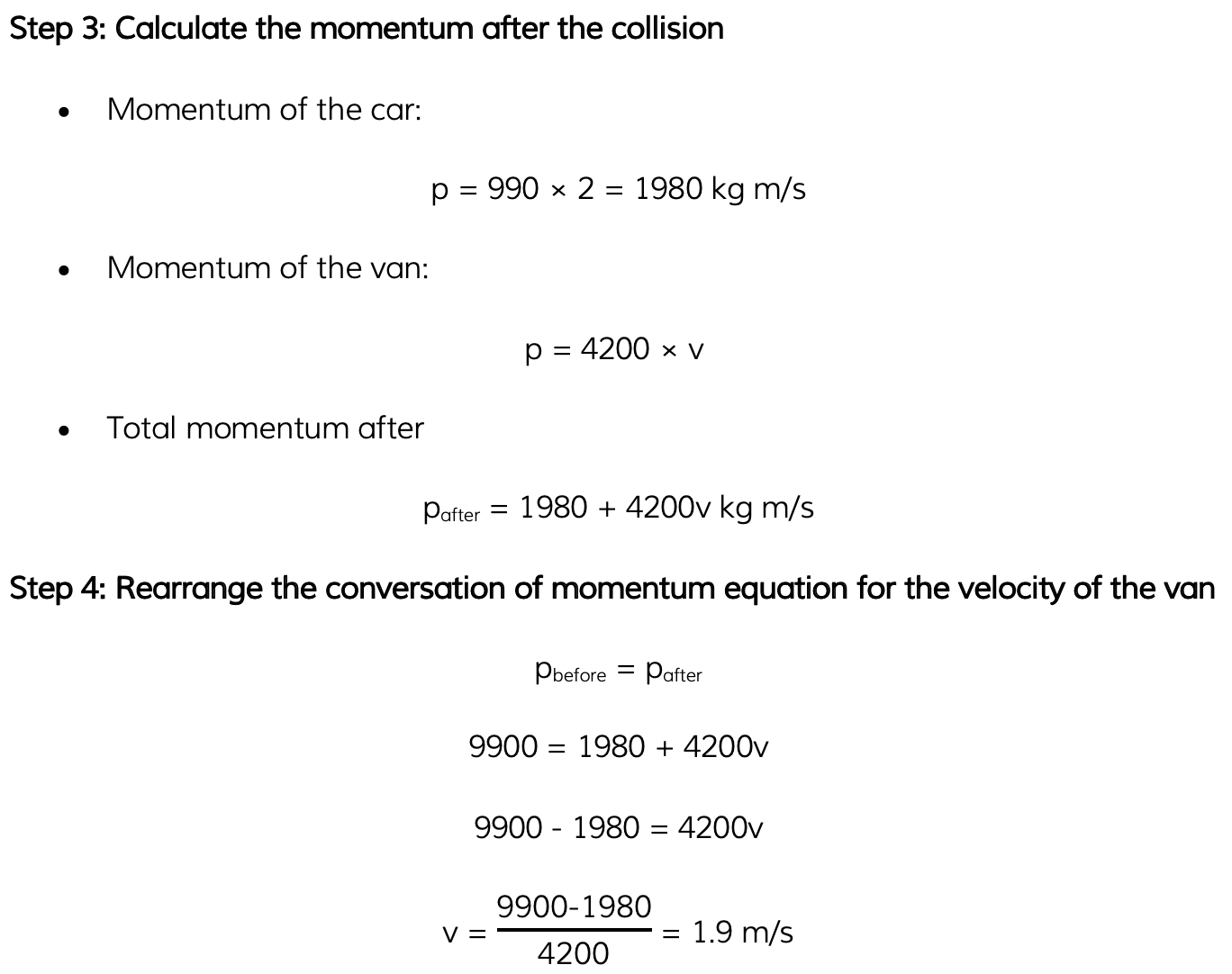
Newton's Third Law & Momentum
Newton’s third law of motion states:
Whenever two bodies interact, the forces they exert on each other are equal and opposite
This means:
When one object exerts a force on another object, the second object will exert an equal force on the first object in the opposite direction
When two objects collide, both objects will react, generally causing one object to speed up (gain momentum) and the other object to slow down (lose momentum)

Newton's third law can be applied to collisions
Consider the collision between two trolleys, A and B:
When trolley A exerts a force on trolley B, trolley B will exert an equal force on trolley A in the opposite direction
In this case:
FB–A = –FA–B
While the forces are equal in magnitude and opposite in direction, the accelerations of the objects are not necessarily equal in magnitude
From Newton's second law, acceleration depends upon both force and mass, this means:
For objects of equal mass, they will have equal accelerations
For objects of unequal mass, they will have unequal accelerations
Examiner Tips and Tricks
Remember the units of momentum as kg m/s which is the product of the units of mass (kg) and velocity (m/s).Which direction is taken as positive is completely up to you in the exam. In general, the right and upwards are taken as positive, and down or to the left as negative.
If an exam question asks you to analyse a collision, follow these tips for full marks:
Always consider the motion before and after the collision and state:
The velocities of each object
The direction each object moves
State whether the collision was elastic or inelastic and explain your reasoning
In a perfectly elastic collision, the kinetic energy is the same before and after
In a perfectly inelastic collision, the two objects stick together after colliding
Describe any energy transfers that occur if kinetic energy is not conserved
For example, it may be converted into heat, sound, elastic potential energy etc
If it is not given in the question already, drawing a diagram of before and after helps keep track of all the masses and velocities (and directions) in the conversation of momentum questions.
Remember in Newton's Third law that the two forces should always be from different objects.

Unlock more, it's free!
Did this page help you?